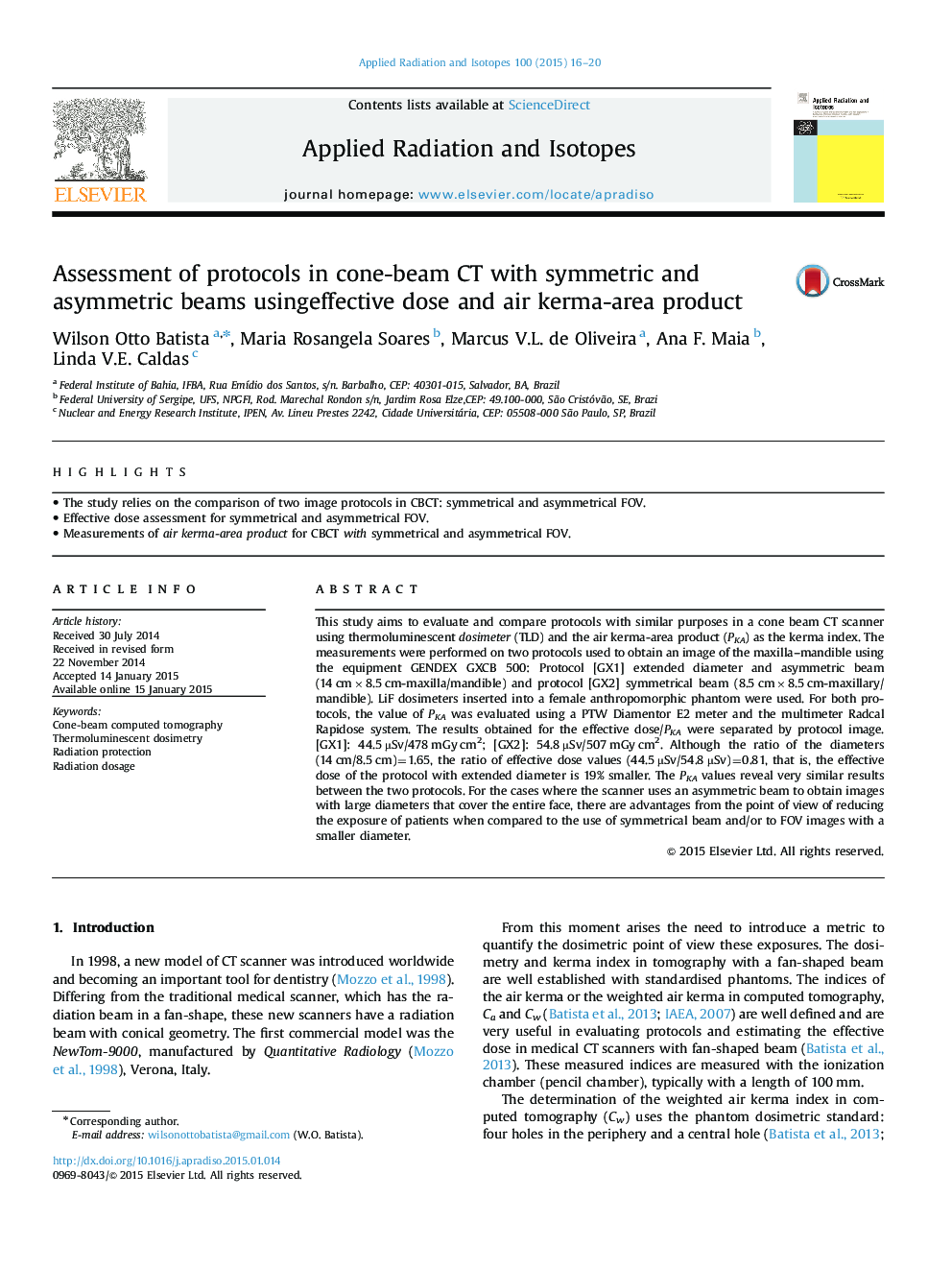| Article ID | Journal | Published Year | Pages | File Type |
|---|---|---|---|---|
| 1878979 | Applied Radiation and Isotopes | 2015 | 5 Pages |
•The study relies on the comparison of two image protocols in CBCT: symmetrical and asymmetrical FOV.•Effective dose assessment for symmetrical and asymmetrical FOV.•Measurements of air kerma-area product for CBCT with symmetrical and asymmetrical FOV.
This study aims to evaluate and compare protocols with similar purposes in a cone beam CT scanner using thermoluminescent dosimeter (TLD) and the air kerma-area product (PKA) as the kerma index. The measurements were performed on two protocols used to obtain an image of the maxilla–mandible using the equipment GENDEX GXCB 500: Protocol [GX1] extended diameter and asymmetric beam (14 cm×8.5 cm-maxilla/mandible) and protocol [GX2] symmetrical beam (8.5 cm×8.5 cm-maxillary/mandible). LiF dosimeters inserted into a female anthropomorphic phantom were used. For both protocols, the value of PKA was evaluated using a PTW Diamentor E2 meter and the multimeter Radcal Rapidose system. The results obtained for the effective dose/PKA were separated by protocol image. [GX1]: 44.5 µSv/478 mGy cm2; [GX2]: 54.8 µSv/507 mGy cm2. Although the ratio of the diameters (14 cm/8.5 cm)=1.65, the ratio of effective dose values (44.5 µSv/54.8 µSv)=0.81, that is, the effective dose of the protocol with extended diameter is 19% smaller. The PKA values reveal very similar results between the two protocols. For the cases where the scanner uses an asymmetric beam to obtain images with large diameters that cover the entire face, there are advantages from the point of view of reducing the exposure of patients when compared to the use of symmetrical beam and/or to FOV images with a smaller diameter.
